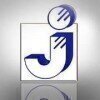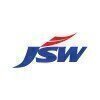
i
JSW
Steel
Filter interviews by
JSW Steel Senior QA QC Engineer Interview Questions and Answers
6 Interview questions
Slag is a byproduct of metal smelting process. Flux is a substance used to promote fusion in welding and soldering.
Slag is a glass-like byproduct of metal smelting process
It is usually composed of impurities that are separated from the metal during the smelting process
Flux is a substance used to promote fusion in welding and soldering
It helps to prevent oxidation and other impurities from contaminating the weld or...
Blast furnace liquids refer to the molten iron and slag that are produced during the iron-making process in a blast furnace.
Blast furnace liquids are a mixture of molten iron and slag
They are produced during the iron-making process in a blast furnace
The molten iron is typically used to make steel
The slag is a byproduct that can be used in construction or as a raw material in cement production
Iron is a chemical element while steel is an alloy of iron and carbon.
Iron is a pure element while steel is a mixture of iron and carbon
Iron is soft and malleable while steel is hard and strong
Iron rusts easily while steel is more resistant to corrosion
Iron is used in construction, manufacturing, and transportation while steel is used in construction, manufacturing, and many other industries
Examples of iron produc...
The melting point of steel varies depending on the type of steel, but generally ranges from 1370-1530°C (2500-2790°F).
Steel is an alloy of iron and carbon, with other elements added for specific properties.
The melting point of steel can be affected by the amount and type of alloying elements.
Different types of steel have different melting points, with some high-strength steels having melting points above 2000°C.
St...
What people are saying about JSW Steel





Steel is an alloy of iron and carbon, with other elements added to enhance its properties.
Steel is primarily composed of iron and carbon.
The carbon content in steel is typically between 0.2% and 2.1%.
Other elements like manganese, chromium, nickel, and molybdenum are added to improve strength, hardness, and corrosion resistance.
The composition of steel can vary depending on the desired properties and intended use.
...
Ladle refining process is a secondary steelmaking process used to remove impurities from molten steel.
Molten steel is transferred from the primary steelmaking furnace to a ladle.
Various chemicals are added to the ladle to remove impurities such as sulfur, phosphorus, and carbon.
The ladle is then stirred to ensure the chemicals are evenly distributed.
The refined steel is then poured into molds to create the desired...
JSW Steel Senior QA QC Engineer Interview Experiences
1 interview found
I applied via Company Website and was interviewed in Mar 2022. There were 2 interview rounds.
(3 Questions)
- Q1. What is steel. Iron metal composition
- Ans.
Steel is an alloy of iron and carbon, with other elements added to enhance its properties.
Steel is primarily composed of iron and carbon.
The carbon content in steel is typically between 0.2% and 2.1%.
Other elements like manganese, chromium, nickel, and molybdenum are added to improve strength, hardness, and corrosion resistance.
The composition of steel can vary depending on the desired properties and intended use.
For e...
- Q2. Different between iron and steel
- Q3. What is steel melting point
- Ans.
The melting point of steel varies depending on the type of steel, but generally ranges from 1370-1530°C (2500-2790°F).
Steel is an alloy of iron and carbon, with other elements added for specific properties.
The melting point of steel can be affected by the amount and type of alloying elements.
Different types of steel have different melting points, with some high-strength steels having melting points above 2000°C.
Steel c...
(3 Questions)
- Q1. What is blast furnace liquids
- Ans.
Blast furnace liquids refer to the molten iron and slag that are produced during the iron-making process in a blast furnace.
Blast furnace liquids are a mixture of molten iron and slag
They are produced during the iron-making process in a blast furnace
The molten iron is typically used to make steel
The slag is a byproduct that can be used in construction or as a raw material in cement production
- Q2. What is slag. And flux
- Ans.
Slag is a byproduct of metal smelting process. Flux is a substance used to promote fusion in welding and soldering.
Slag is a glass-like byproduct of metal smelting process
It is usually composed of impurities that are separated from the metal during the smelting process
Flux is a substance used to promote fusion in welding and soldering
It helps to prevent oxidation and other impurities from contaminating the weld or sold...
- Q3. What is Ladel refining process
- Ans.
Ladle refining process is a secondary steelmaking process used to remove impurities from molten steel.
Molten steel is transferred from the primary steelmaking furnace to a ladle.
Various chemicals are added to the ladle to remove impurities such as sulfur, phosphorus, and carbon.
The ladle is then stirred to ensure the chemicals are evenly distributed.
The refined steel is then poured into molds to create the desired shap...
Interview Preparation Tips
- Diploma
Interview questions from similar companies

Senior Engineer Interview Questions & Answers
Jindal Steel and Powerposted on 18 May 2020
I applied via Naukri.com and was interviewed in Nov 2019. There were 3 interview rounds.
Interview Questionnaire
8 Questions
- Q1. About your professional & family details
- Q2. Is there any previous experience about coke oven plants & steel industry
- Q3. If you have the previous experience about those plant then they will ask u question regarding those plant systems.
- Q4. Tell me two most Appreciateable job you have done and two mistakes with the findings from that mistake.
- Q5. About PCS7 software knowledge & siemens plc automation related details
- Q6. Field instruments related questions, like control valves, transmitters, analyzers etc.
- Q7. How to calibrate a control valve
- Ans.
Control valve calibration involves adjusting the valve to ensure it operates within specified parameters.
Determine the valve's operating range and desired set points
Use a calibration bench or in-line calibration equipment to adjust the valve's position and response time
Verify the valve's performance using a flow meter or pressure gauge
Document the calibration process and results for future reference
- Q8. Pcs7 server client systems
Interview Preparation Tips
HR round is very general discussion, No Group discussion held.
Overall you have a good interviewing experience if you have a sound technical skills in your field.
Interview has two part
1. Telephonic interview with general details & basic technical question related to that post.
2. On site interview with details discussion & technical & HR discussion.

I applied via Naukri.com and was interviewed before May 2021. There was 1 interview round.
(1 Question)
- Q1. What is proxy? what is smps? what is encoder? Star delta working
- Ans.
Proxy is an intermediary server that acts as a gateway between clients and servers. SMPS is a power supply unit that converts AC to DC. Encoder is a device that converts motion into digital signals. Star delta is a method of starting three-phase motors.
Proxy helps in hiding the identity of clients and servers.
SMPS is commonly used in computers and other electronic devices.
Encoders are used in robotics, automation, and ...
Interview Preparation Tips
Skills evaluated in this interview

I appeared for an interview before Jan 2021.




(3 Questions)
- Q1. What are your salary expectations?
- Q2. Any questions hr team
- Ans. My contact no not any time network area ple msg me
- Q3. Any questions hr team
Diploma
(1 Question)
- Q1. What are your salary expectations?
- Ans.
I expect a competitive salary that reflects my skills, experience, and the industry standards for a Senior Engineer role.
Research industry standards: For example, according to Glassdoor, Senior Engineers in my area typically earn between $100,000 and $130,000.
Consider my experience: With over 8 years in the field and expertise in multiple programming languages, I believe a salary in the upper range is justified.
Factor ...




Interview Preparation Tips
What people are saying about JSW Steel






I applied via Company Website and was interviewed before Nov 2018. There were 5 interview rounds.
Interview Questionnaire
2 Questions
- Q1. Interviewer asked questions based on resume contents
- Q2. Just honest reply
Interview Preparation Tips

I applied via Referral and was interviewed before Jan 2019. There were 6 interview rounds.
Interview Questionnaire
7 Questions
- Q1. Say something about urself
- Ans.
I am a seasoned Sr. Engineer with over 10 years of experience in software development and a passion for innovative solutions.
Expertise in full-stack development, having led projects using technologies like React, Node.js, and Python.
Successfully managed a team of 5 engineers to deliver a complex e-commerce platform ahead of schedule.
Strong background in Agile methodologies, facilitating daily stand-ups and sprint plann...
- Q2. Work experience
- Q3. Technical with hr and the concerned department head asked various question
- Q4. Hr round
- Q5. Salary negotiations
- Q6. 3.6 salary I was offered in the year 2010
- Q7. Excepted
Interview Preparation Tips

I applied via Company Website and was interviewed in Jul 2018. There were 5 interview rounds.
Interview Questionnaire
2 Questions
- Q1. One important incident in your carrier where you think you have contributed effectively in your organization
- Ans.
Implemented a new customer feedback system resulting in increased customer satisfaction and retention rates.
Identified the need for a more efficient feedback system
Researched and implemented a new software to collect and analyze customer feedback
Analyzed the data to identify trends and areas for improvement
Implemented changes based on feedback leading to improved customer satisfaction and retention rates
- Q2. What extra zeal you have that You can be hired
- Ans.
I have a strong passion for leadership and a proven track record of motivating teams to achieve success.
Proven track record of successfully leading teams in previous roles
Passionate about developing and mentoring team members
Strong communication and interpersonal skills
Ability to problem-solve and make quick decisions under pressure
Interview Preparation Tips
Experience: Reasoning, English and core subject
Round: Test
Experience: Psychometric
General Tips: Be just yourself, don't lie an inch neither exxagerate things. Coj interviewer understands very quickly your caliber and vague things.
Skills: Communication, Body Language, Analytical Skills
Duration: >3 Months

I applied via Naukri.com and was interviewed before Oct 2019. There were 4 interview rounds.
Interview Questionnaire
1 Question
- Q1. Technical questions on plc and scada.
Interview Preparation Tips

I applied via Recruitment Consultant and was interviewed in May 2019. There were 3 interview rounds.
Interview Questionnaire
2 Questions
- Q1. Most important question-What have you done in previous organization and what's your roles?
- Q2. Tell me something about yourself? And All questions related to your resume (data written there)
Interview Preparation Tips
Any big issues which you have resolved during your career.

I applied via Referral and was interviewed before Mar 2021. There was 1 interview round.
(1 Question)
- Q1. Basic Electrical questions
Interview Preparation Tips
JSW Steel Interview FAQs
Tell us how to improve this page.
JSW Steel Interviews By Designations
- JSW Steel Assistant Manager Interview Questions
- JSW Steel Graduate Engineer Trainee (Get) Interview Questions
- JSW Steel Deputy Manager Interview Questions
- JSW Steel Junior Engineer Interview Questions
- JSW Steel Assistant Engineer Interview Questions
- JSW Steel Manager Interview Questions
- JSW Steel Electrical Engineer Interview Questions
- JSW Steel Senior Engineer Interview Questions
- Show more
Interview Questions from Similar Companies
JSW Steel Senior QA QC Engineer Reviews and Ratings
based on 1 review
Rating in categories
|
Assistant Manager
3.5k
salaries
| ₹5.8 L/yr - ₹12 L/yr |
|
Junior Engineer
2.3k
salaries
| ₹2.5 L/yr - ₹5.6 L/yr |
|
Deputy Manager
1.7k
salaries
| ₹9.1 L/yr - ₹16 L/yr |
|
Manager
1.1k
salaries
| ₹11.2 L/yr - ₹20 L/yr |
|
Senior Engineer
1.1k
salaries
| ₹4.6 L/yr - ₹11 L/yr |

Tata Steel

Jindal Steel and Power

Jindal Stainless

Jindal Saw
- Home >
- Interviews >
- JSW Steel Interview Questions











